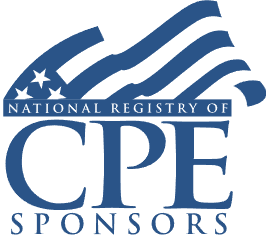Controlled Groups and Attribution Rules: Benefit Plans, Brother-Sister Groups, and Tax Reform

Course Details
- smart_display Format
On-Demand
- signal_cellular_alt Difficulty Level
Intermediate
- work Practice Area
Corporate Tax
- event Date
Thursday, November 7, 2019
- schedule Time
1:00 PM E.T.
- timer Program Length
110 minutes
-
BARBRI is a NASBA CPE sponsor and this 110-minute webinar is accredited for 2.0 CPE credits.
-
BARBRI is an IRS-approved continuing education provider offering certified courses for Enrolled Agents (EA) and Tax Return Preparers (RTRP).
-
Live Online
On Demand
This course will breakdown the application of controlled group and ownership attribution rules using examples, and point out where, under recent tax reform and existing rules, they are applicable. Complex, difficult to wade through, and are not consistent throughout the IRC and regulations. At the same time, practitioners must be familiar with the rules in order to make use of them for the benefit of their clients and to avoid potential liability.
Description
Internal Revenue Code § 414(b) requires the treatment of controlled groups as a single employer for most benefit plan purposes, but determining whether a business is part of a controlled group is challenging. Section 1563 details the requirements of parent-subsidiary, brother-sister, and combined groups, but this alone is not enough. Practitioners must be familiar with, and wary of, the ownership attribution rules which can create unintended related groups.
A parent-subsidiary controlled group is formed when one business owns 80% or more of another company. A brother-sister group exists when five or fewer owners own a controlling interest and have effective control of a set of entities. Effective control requires more than 50% collective ownership of the stock in each corporation, taking into account only the owner’s lowest common ownership percentage amount the entities under consideration. The determination becomes more difficult under the many rules that attribute business ownership to individuals who don't have direct ownership in an entity (IRC Sections 267, 1563, 318, as well as others).
At the same time, business owners and tax practitioners cannot ignore these determinations. Controlled groups are treated as single employers for retirement and health benefit plan purposes which can have serious impacts on who the plan covers or who the plan must take into account when performing coverage and nondiscrimination testing. Failing to take controlled group status into account when operating your benefit plans can expose the plans to possible loss of tax qualified status. Discovery of these issues often comes up in the due diligence process preceding a sale or merger of a business and in some cases the size of the potential tax liability can derail the transaction.
Familiarity with the controlled group rules is also essential to understanding and implementing several aspects of recent tax reform (Tax Cut and Jobs Act of 2017). The business interest limitation rules, IRC Section 163(j), the use of the cash basis of accounting, and the exemption from UNICAP all require aggregation of receipts under attribution rules to qualify for the under-$25 million gross receipts test.
Listen as our panel of experts explains how to recognize constructive ownership, how to apply the attribution tests using specific examples, and where related party rules matter under recent and prior tax regulations.
Outline
- Related parties
- Section 1563: controlled groups
- Section 414(b)-(c) controlled groups and Section 414(m) affiliated entities
- Determining attribution
- Related party considerations
- Benefit plans
- Small Business Taxpayers
- Tax consequences
- New considerations after tax reform
Benefits
The panel will review these and other critical issues:
- Definitions of parent-subsidiary and brother-sister relationships
- Applying attribution rules using case scenarios
- Determining the aggregation threshold under recent tax reform
- Identifying affiliated services groups
- Tax caveats of being a related party
NASBA Details
Learning Objectives
After completing this course, you will be able to:
- Identify members of a controlled group
- Determine if a parent-subsidiary relationship exists
- Decide whether a business qualifies under the small business gross receipts test
- Ascertain whether benefit plans are jeopardized by related party relationships
- Field of Study: Taxes
- Level of Knowledge: Intermediate
- Advance Preparation: None
- Teaching Method: Seminar/Lecture
- Delivery Method: Group-Internet (via computer)
- Attendance Monitoring Method: Attendance is monitored electronically via a participant's PIN and through a series of attendance verification prompts displayed throughout the program
- Prerequisite: Three years+ business or public firm experience preparing complex tax forms and schedules, supervising other preparers or accountants. Specific knowledge and understanding of pass-through taxation, including taxation of partnerships, S corporations and sole proprietorships, qualified business income, net operating losses and loss limitations; familiarity with net operating loss carry-backs, carry-forwards and carried interests.

Strafford Publications, Inc. is registered with the National Association of State Boards of Accountancy (NASBA) as a sponsor of continuing professional education on the National Registry of CPE Sponsors. State boards of Accountancy have final authority on the acceptance of individual courses for CPE Credits. Complaints regarding registered sponsons may be submitted to NASBA through its website: www.nasbaregistry.org.

Strafford is an IRS-approved continuing education provider offering certified courses for Enrolled Agents (EA) and Tax Return Preparers (RTRP).
Unlimited access to premium CLE courses:
- Annual access
- Available live and on-demand
- Best for attorneys and legal professionals
Unlimited access to premium CPE courses.:
- Annual access
- Available live and on-demand
- Best for CPAs and tax professionals
Unlimited access to premium CLE, CPE, Professional Skills and Practice-Ready courses.:
- Annual access
- Available live and on-demand
- Best for legal, accounting, and tax professionals
Unlimited access to Professional Skills and Practice-Ready courses:
- Annual access
- Available on-demand
- Best for new attorneys
Related Courses

Nexus Limitations and Protections for Service Providers Post-Wayfair
Available On-Demand

State Taxation of Income From Foreign Affiliates After the Tax Reform
Available On-Demand

Section 965 Foreign Deemed Repatriation Transition Tax: Final Regulations
Available On-Demand